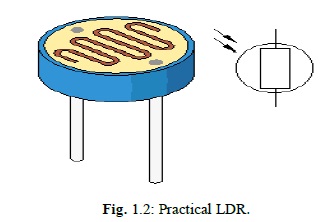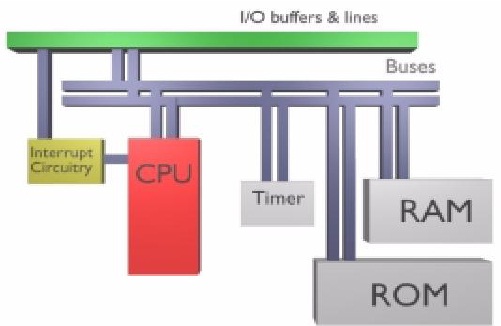





Published on Apr 02, 2024
We need to save or conserve energy because most of the energy sources we depend on, like coal and natural gas can't be replaced. Once we use them up, they're gone forever. Saving power is very important, instead of using the power in unnecessary times it should be switched off. In any city “STREET LIGHT” is one of the major power consuming factors. Most of the time we see street lights are ON even after sunrise thus wasting lot of energy.
Over here we are avoiding the problem by having an automatic system which turns ON & OFF the street lights at given time or when the ambient light falls below a specific intensity. Each controller has an LDR which is used to detect the ambient light. If the ambient light is below a specific value the lights are turned ON.
A light dependent sensors is interfaced to the pic18f452 microcontroller it is used to track the sun light and when the sensors goes dark the led will be made on and when the sensor founds light the led will be made OFF. It clearly demonstrates the working of transistor in saturation region and cut-off region. The working of relay is also known Microcontroller and the code is written in c language in MikroC ide, the resulted value can be seen with the help of UART or LCD display .Automatic Street Light Control System is a simple yet powerful concept, which uses transistor as a switch.
By using this system manual works are 100% removed. It automatically switches ON lights when the sunlight goes below the visible region of our eyes. This is done by a sensor called Light Dependent Resistor (LDR) which senses the light actually like our eyes. It automatically switches OFF lights whenever the sunlight comes, visible to our eyes. Aim of this seminar is to control the street light using LDR. When the light falling occur means resistance value will be change. There is no light then the resistance value is change. From this resistance change the voltage variation can be obtained this value is given to ADC of PIC. PIC is stand for peripheral interface controller.
LDRs or Light Dependent Resistors are very useful especially in light/dark sensor circuits. Normally the resistance of an LDR is very high, sometimes as high as 1000000 ohms, but when they are illuminated with light resistance drops dramatically. Electronic onto sensors are the devices that alter their electrical characteristics, in the presences of visible or invisible light. The best-known devices of this type are the light dependent resistor (LDR), the photo diode and the phototransistors. Light dependent resistor as the name suggests depends on light for the variation of resistance.
LDR are made by depositing a film of cadmium sulphide or cadmium selenide on a substrate of ceramic containing no or very few free electrons when not illuminated.The longer the strip the more the value of resistance.
When light falls on the strip, the resistance decreases. In the absence of light the resistance can be in the order of 10K ohm to 15K ohm and is called the dark resistance. Depending on the exposure of light the resistance can fall down to value of 500 ohms.
The power ratings are usually smaller and are in the range 50mw to .5w. Though very sensitive to light, the switching time is very high and hence cannot be used for high frequency applications. They are used in chopper amplifiers. Light dependent resistors are available as discs 0.5cm to 2.5cm. The resistance rises to several Mega ohms under dark conditions.

When an LDR is brought from a certain illuminating level into total darkness, the resistance does not increase immediately to the dark value. The recovery rate is specified in k ohm/second and for current LDR types it is more than 200k ohm/second. The recovery rate is much greater in the reverse direction, e.g. going from darkness to illumination level of 300 lux, it takes less than 10ms to reach a resistance which corresponds with a light level of 400 lux.
A LDR may be connected either way round and no special precautions are required when soldering.
Darkness: Maximum resistance, about 1Mohm.
Very bright light: Minimum resistance, about 100 ohm.
The LDR is a variable resistor whose resistance decreases with the increase in light intensity. Two cadmium sulphide (cds) photoconductive cells with spectral response similar to that of the human eye. The cell resistance falls with increasing light intensity. some of its features:
High reliability.
Light weight.
Wide spectral response.
Wide ambient temperature range.
This section provides an introduction to most common word in the embedded system “microcontroller”. It is written to familiarize you with microcontroller terminology and basic microcontroller architecture. A microcontroller is a single chip, self-contained computer which incorporates all the basic components of a personal computer on a much smaller scale. Microcontrollers are often referred to as single chip devices or single chip computers. The main consequence of the microcontroller’s small size is that its resources are far more limited than those of a desktop personal computer. In functional terms, a microcontroller is a programmable single chip which controls a process or system.

Microcontrollers are typically used as embedded controllers where they control part of a very larger system such as an appliance, automobile, scientific instrument or a computer peripheral. Microcontrollers are designed to be low cost solutions; therefore using them can drastically reduce part and design costs for a project. Physically, a microcontroller is an integrated circuit with pins along each side. The pins presented by a microcontroller are used for power, ground, oscillator, I/O ports, interrupt request signals, reset and control. In contrast, the pins exposed by a microprocessor are most often memory bus signals (rather than I/O ports).
Microchip manufacture a series of microcontrollers called PIC. (Peripheral interface controller). There are many different flavours available, some basic low memory types, going right up through to ones that have Analogue - To - Digital converters and even PWM built in. A PIC microcontroller is a processor with built in memory and RAM and you can use it to control your projects (or build projects around it). So it saves you building a circuit that has separate external RAM, ROM and peripheralchips. Microchip is providing the 8-bit, 16-bit and the 32 bit microcontrollers based on the desired application requirement the design engineer can choose from those. Microchip is also providing the software for the microcontrollers where the application programs are written MIKROC IDE, it is also providing the in circuit debugger called MPLAB ICD3.
Photo resistors convert light into electricity and are not dependent on any other force.
LDRs are sensitive, inexpensive, and readily available devices. They have good power and voltage handling capabilities, similar to those of a conventional resistor.
They are small enough to fit into virtually any electronic device and are used all around the world as a basic component in many electrical systems.
Photo resistors are simply designed and are made from materials that are widely available, allowing hundreds of thousands of units to be produced each year.
A LDR may be connected either way round and no special precautions are required when soldering.
Can be more complicated to align detector pairs.
Is sensitive to ambient light and require careful shielding.
Photo resistors are only sensitive to light and no other force can power it without risking damage. Also, they are unable to detect low light levels and may take a few seconds to deliver a charge while their electrons build up momentum.
In this seminar work we have studied and implemented a complete working model using a PIC microcontroller. The programming and interfering of PIC microcontroller has been mastered during the implementation. This work includes the study of energy saving system in many applications. We can develop Solar Street light system with Automatic street light controller. The system can be powered from a battery, which can be charged during day time by harvesting the solar energy through a solar cell.
The solar energy harvested from sunlight can be stored, inverted from DC voltage to AC voltage using sun tie converter. The AC voltage can be stepped up and given to the electric grid. The AC voltage from the electric grid can be stepped down, rectified and used for powering the circuit. Meanwhile, the street light can also be powered by the A.C. voltage, which is controlled by a relay switch connected to the switching part of the circuit. The above mentioned strategy will enable us to harvest solar energy in an effective way for the operation of the circuit and for powering the street light also.
www.google.com
www.wikipedia.com
S. P. Roundy, P. K. Wright, and J. M. Rabae,(2003),A Study of Low Level Vibrations as a Power Source for Wireless Sonsor Nodes, Computer Communications, pp.1131-1144.
| Are you interested in this topic.Then mail to us immediately to get the full report.
email :- contactv2@gmail.com |